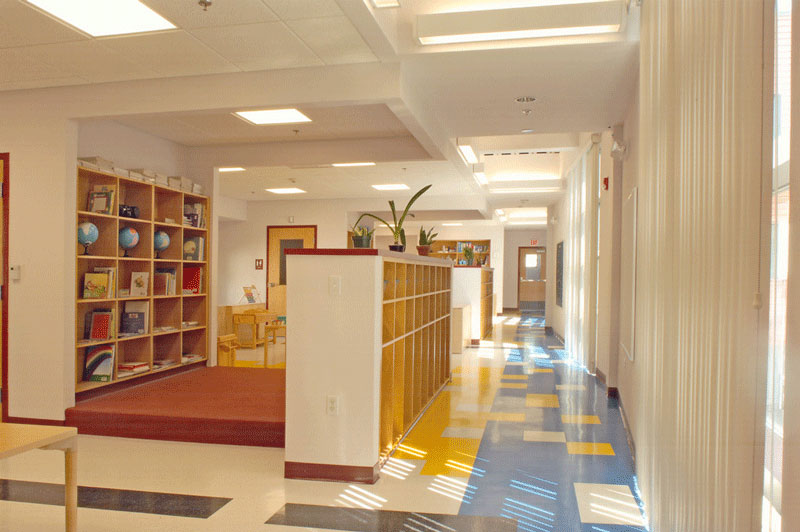
Interior of the Montessori School at the Alvis Brooker building.
GDDC LEADERSHIP:
Linda Townsend Maier: Executive Director
Linda is Executive Director and one of the founders of GDDC. She previously served as chairwoman of DCMT and President of the GDDC Board.
Sheila E. Shanklin: Board Treasurer
Sheila has oversight of the financials for GDDC. She is Director of Cooperative Management at Home Inc.
PARTNERS / FUNDING / INVESTMENT:

The "Connecting Our Community" event.
THE DWIGHT CENTRAL MANAGEMENT TEAM INITIATIVES:
- The Concerned Citizens Committee
- The New Haven Safe Streets Coalition
- 2010 New Haven Neighborhood Quality of Life Survey
- Dwight Spring Festival and Clean Up
- Partnership to Enhance Neighborhood (PEN) Rehabilitation of vacant Kensington Street properties for homeownership
- ‘Adopt A Site’ program to clean and maintain blighted buildings
- DCMT is the ‘community’ in Community Based Policing that meets the first Tuesday of every month at the All Purpose Room at Amistad Academy
YALE UNIVERSITY LEADERSHIP:
Yale University has been committed to building partnerships with the City of New Haven and the Dwight neighborhood to “create a new model for how universities can be leading citizens for their host communities.
YALE UNIVERSITY CONTRIBUTIONS:
- Yale Community Outreach Partnership Center (1994) funded by HUD—helped fund the Neighborhood Plan.
- Joint Community Development Program Grant (HUD) (1996)—contributed funding for the school addition, housing programs, office and operating costs.
- Yale Homeowners Program $25,000 incentive for Yale employees who buy a home in Dwight and other City neighborhoods.
YALE UNIVERSITY
PARTNERSHIPS WITH GDDC:
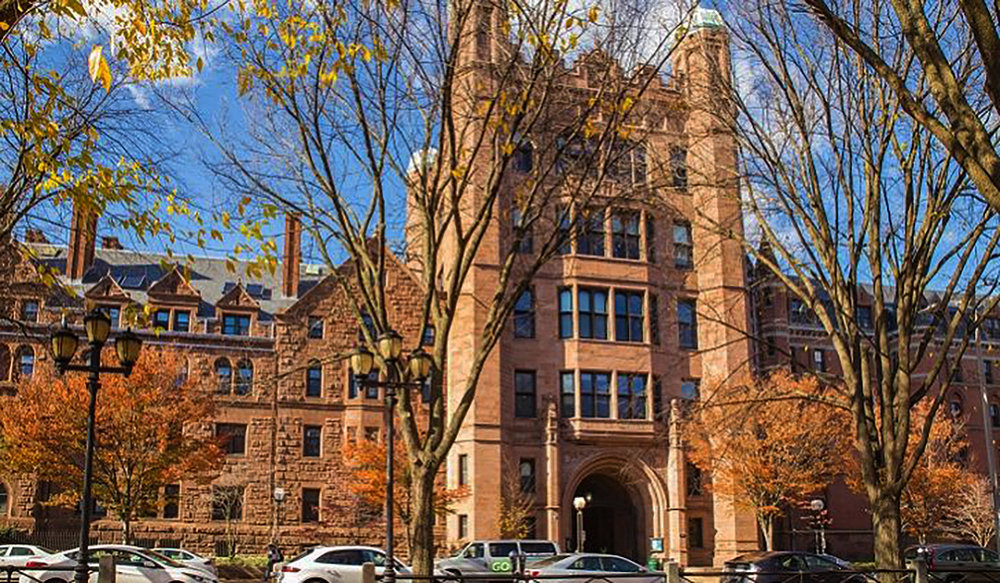
Yale University old campus building.
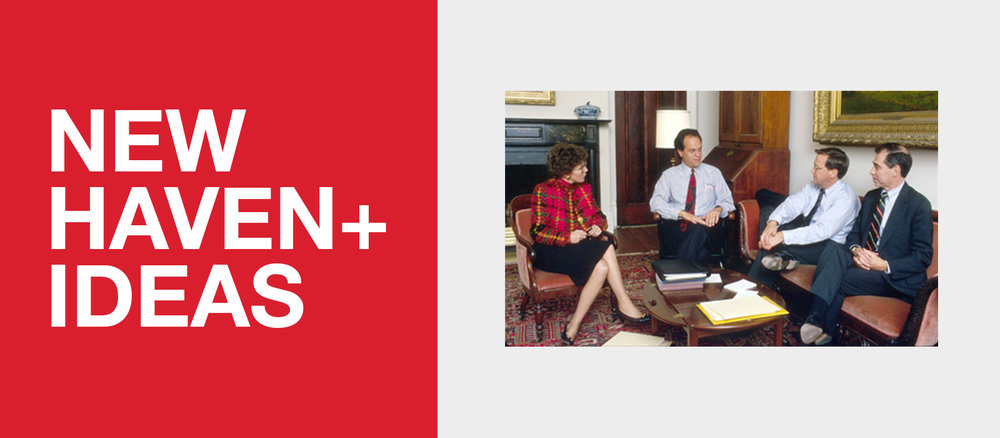
The City of New Haven And Yale University
Mayor John DeStefano (center) is pictured with (from left) Vice President Linda Lorimer, President Richard C. Levin, and Vice President Bruce Alexander, head of Yale's Office of New Haven and State Affairs. (Photo by Michael Marsland). This group among others in the community would transform New Haven, and Yale university. This core group would apply for state federal funding to re-build communities.
NEW HAVEN-YALE COMMUNITY OUTREACH PARTNERSHIP CENTER (1994)
Yale University and New Haven worked with Dwight for years to build a healthy community. One of the hallmarks of these efforts was a grant to create and fund the New Haven-Yale Community Outreach Partnership Center COPC in 1994. This money supported Yale schools participation in redevelopment initiatives. It also resulted in the creation of the first neighborhood plan.
LUDWIG CENTER FOR COMMUNITY & ECONOMIC
DEVELOPMENT AT YALE LAW SCHOOL
GDDC has been represented by the Yale Law Clinic since it’s inception in 1995, when the Yale Law Clinic assisted with its incorporation and legal documents. Since then, the Yale Law Clinic has worked with GDDC on a range of matters. It has represented GDDC in connection with the ownership and development of its properties, its lease with Stop & Shop and other tenants, its corporate structure, tax matters, and several financings.
YALE SCHOOL OF MANAGEMENT
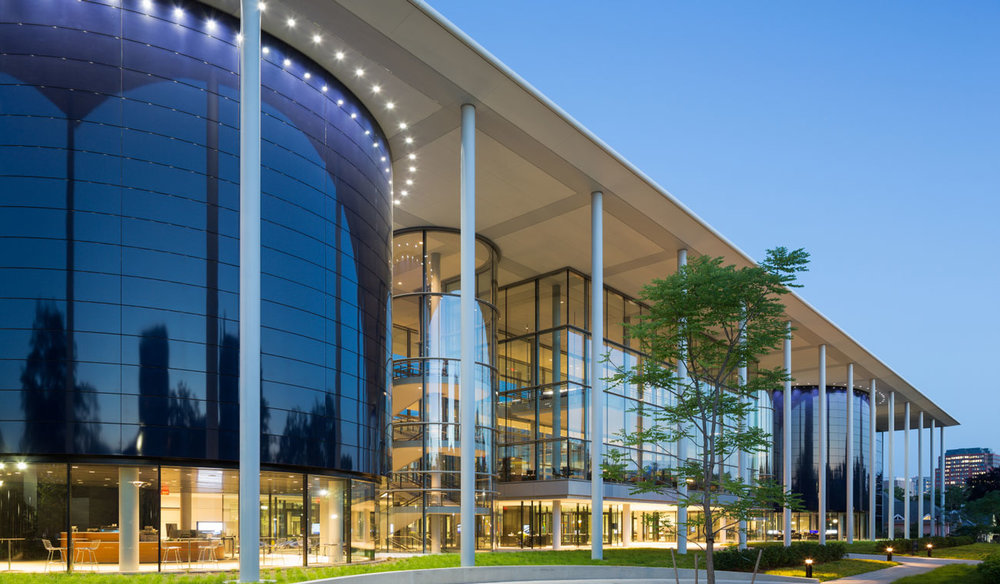
They have contributed faculty and students to work with GDDC on a number of projects.
YALE URBAN DESIGN WORKSHOP (YUDW)
YUDW provides staff for all phases of the development of the Greater Dwight Neighborhood Plan and its ten year updates, under the leadership of Alan Plattus. YUDW also helped with developing plans for housing renovation.
YUDW created the design for the Alvis Brooker Building and for the All Purpose Community Center now at the Amistad Academy.
OFFICE OF NEW HAVEN AND STATE AFFAIRS AT YALE
This office managed the initial federal grants for GDDC.
HOSPITAL OF SAINT RAPHAEL, NOW YALE NEW HAVEN HOSPITAL
AT SAINT RAPHAEL CAMPUS

Yale University Hospital at Saint Raphael Campus on Chapel Street.
As one of the original partners and stakeholders with the Dwight neighborhood, the Hospital of Saint Raphael provided consistent support in planning and implementing programs to promote community health, safety, and sound housing. The hospital was established to help a struggling immigrant community more than a century ago. In 2012, with the acquisition of its assets by Yale-New Haven Hospital, the Hospital of Saint Raphael became Yale-New Haven Hospital Saint Raphael Campus. It is now part of a single 1,519-bed hospital with two main campuses.
THE CITY OF NEW HAVEN

New Haven green.
The following departments of the City of New Haven all contributed to the success of GDDC thanks to their individual missions:
- New Haven Police Department—instituted Community Based Policing and helped residents develop the Dwight Central Management Team.
- Livable City Initiative (LCI)—provided resources for housing rehabilitation
- City Plan Department-- participated in the Neighborhood Planning Process, to be sure it was aligned with the City’s plans; helped develop the Planned Development District for Dwight Place Plaza
- New Haven Public Schools—partnered with GDDC in creating community rooms at the neighborhood elementary school
- Office of Economic Development –provided resources through the façade improvement program and the brownfields remediation program to prepare the site for the Stop and Shop Fueling Station.
COMMUNITY FOUNDATION FOR GREATER NEW HAVEN

Historic homes on Dwight Street.
The foundation provided a $600,000 loan package to help finance Dwight Place Shopping Center, in conjunction with START Bank and LISC Connecticut. Some of Greater Dwight Development Corporation’s assets are managed according to a long-term investment model established by The Community Foundation. They also provided one of the initial grants to develop the Montessori School on Edgewood program.
THE STATE OF CONNECTICUT
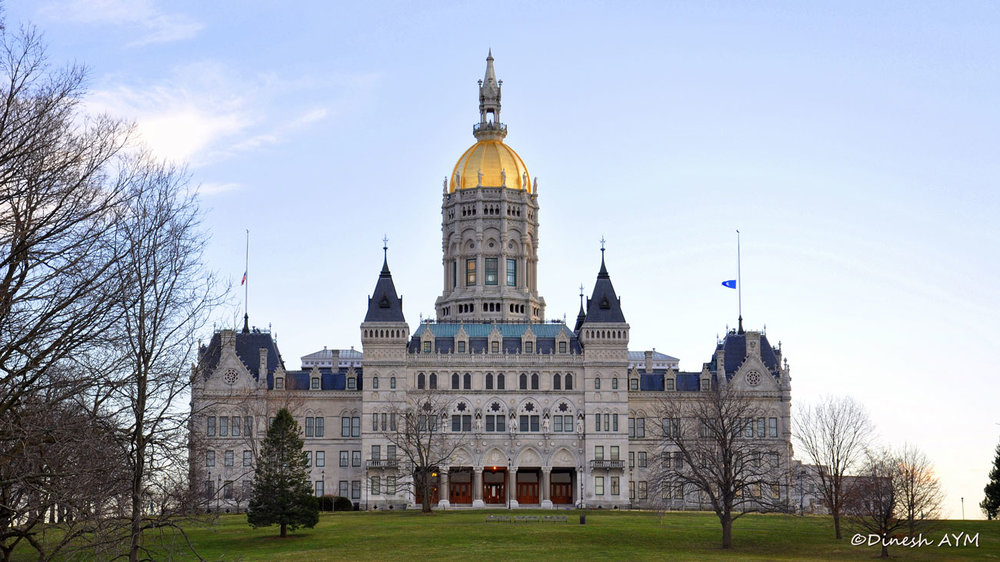
Connecticut State building.
The State of Connecticut has a strong history of investing in New Haven. They provided a grant of $1 million for the Dwight Shopping Plaza and $1.3 million for the construction of the Alvis Brooker Building on Edgewood Avenue.
PARTNERSHIP TO ENHANCE NEIGHBORHOODS (PEN)
The Partnership to Enhance Neighborhoods PEN was a 1995 coalition of public, private, and nonprofit organizations dedicated to the rehabilitation of blighted housing for low-income homeowners in New Haven. PEN was created in cooperation with the seven area banks in the City of New Haven, Yale University Hospital of Saint Raphael Campus and DCMT, and GDDC to help transform the Dwight community.
The major effort was the innovative program to renovate two blocks of Kensington Street in 1995. The effort provided first time homeowners with mortgage funding of $15,000 from the Greater New Haven Community Loan Fund. There were seven participating banks and the Greater New Haven Chamber of Commerce. The banks were: People's Bank, Fleet Bank, First Fidelity, New Haven Savings Bank, Bank of New Haven, Bank of Boston, Centerbank, The banks agreed to make foreclosed vacant properties available to the non-profit developers, Neighborhood Housing Services (NHS) and Neighborhood Housing Investment Corporation.
EMPOWER NEW HAVEN
Empower New Haven (ENH) was created in 1999 as part of the Department of Housing and Urban Development’s HUD Empowerment Zone Program, designed to fight poverty in specific zones nationwide. For ten years ENH worked in New Haven’s neediest neighborhoods doing grant-making, small business development, and homeownership programs. The program provided funding for the brownfields remediation site preparation work needed for the Stop and Shop Fueling Station. It also helped with housing renovation funding.
LOCAL INITIATIVE SUPPORT CORPORATION (LISC)
OF CONNECTICUT AND NEW YORK
LISC investments have been aimed at creating tangible, sustainable improvements in urban communities. LISC invested in GDDC’s housing rehabilitation and economic development initiatives.
URBAN RETAIL INITIATIVES (URI)
URI, a subsidiary of LISC, is a group of investors and financial institutions created to fund and support the growth of retail and small businesses in urban areas. They were an initial major funder of Dwight Place Shopping Plaza in 1998.

